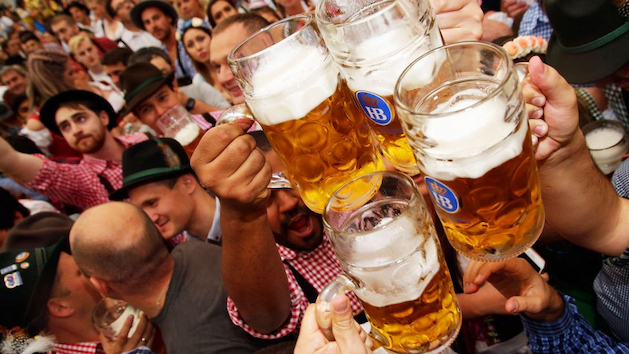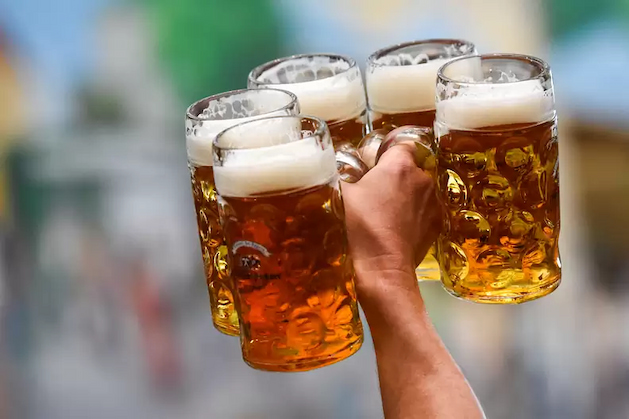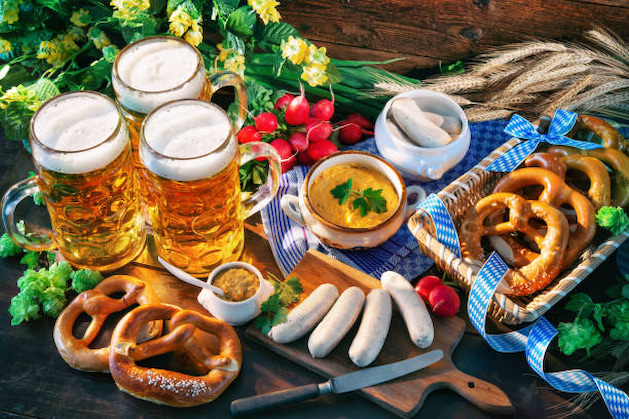If you’re anything like me, the mention of German beer conjures up images of steins, lederhosen, and crowded beer tents at Oktoberfest. And while there’s no denying the popularity of the world’s largest beer festival, there’s so much more than what you’ll find at Oktoberfest. In this article, I’ll be sharing with you some tips for exploring the rich world of German beers wherever you are, even from the comfort of your home.
The History

Before I dive into the different styles you can try, let’s take a quick trip back in time to explore the history of German beer. This popular beverage has been around for centuries in Germany, and it has played an important role in its culture and history.
In 1516, the Reinheitsgebot, or Purity Law, was introduced in Bavaria, which mandated that beer could only be made with three ingredients: water, hops, and malt. This law had a significant impact on the nation’s beer culture and has helped to maintain a high level of quality and consistency.
The Most Popular Styles to Try
There’s a wide variety of German beers, each with its own unique taste and style. Some of the most popular ones include:
- Pilsner: Pilsner is a light, crisp, and refreshing beer that is very popular in Germany. It is characterised by its golden colour, mild hop aroma, and clean taste.
- Hefeweizen: Hefeweizen is a wheat beer that is unfiltered and cloudy in appearance. It has a distinct banana and clove flavour and is often served with a slice of lemon.
- Oktoberfest Beer: Oktoberfest beer is a traditional German lager that is typically brewed for the annual Oktoberfest celebration in Munich. It has a rich, malty flavour and is typically amber or dark in colour.
- Kölsch: Kölsch is a light and refreshing beer that is brewed in Cologne. It has a golden colour and a mild, hoppy flavour.
- Dunkel: Dunkel is a dark lager that has a malty and slightly sweet taste. It is often served with hearty German dishes like sausage and sauerkraut.
- Rauchbier: Rauchbier is a beer that is made by smoking the malt over beechwood. It has a distinct smoky flavour and is often served with smoked meats and cheeses. The most popular Rauchbier is the one made in Bamberg.
Every Region Has Its Own Distinct Style

One of the things that make German beer so fascinating is the regional variations in beer styles. Different regions in Germany have their own unique brewing traditions.
For example, in Bavaria, you’ll find a lot of lagers, including the famous Oktoberfest beer, while in Cologne, they’re known for their light and crisp Kölsch. In Franconia, you’ll find a lot of smoked beers, or Rauchbier, which is made by drying malt over an open flame. Other popular styles of German beer include hefeweizen, pilsner, and altbier.
So, how do you go about exploring all these different styles of German beer? One way is to seek out German bars or pubs in your area. These establishments often offer a wide selection of beers, and the staff are usually knowledgeable about the different styles and can make recommendations.
Another way is to seek out German beers at your local bottle shop or online retailer. Many German breweries export their beer, so you should be able to find a decent selection at most specialty beer shops.
Food Pairings

Beer and food go hand in hand, and there are many traditional German dishes that are often enjoyed with this beverage. For example, a classic Bavarian dish is the Weißwurst, a white sausage often served with sweet mustard and a soft pretzel. This dish pairs perfectly with light and crisp lagers like a Helles or a Pilsner.
Another popular dish is the schnitzel, which is a breaded and fried cutlet of meat that is often served with a side of potato salad. This dish pairs well with a medium-bodied beer like a Märzen or an Oktoberfest beer.
But don’t be afraid to experiment with pairing German brews with non-German cuisine as well. For example, a hefeweizen pairs well with spicy Asian dishes, while a Rauchbier can complement the smoky flavours of barbecue.
Make Your Own Brew
If you’re a beer enthusiast, you might be interested in trying your hand at brewing at home. While it can be a challenging and time-consuming process, it can also be a rewarding and enjoyable hobby. There are many homebrewing kits and resources available online that can help you get started. When brewing German beer at home, it’s important to pay attention to the specific ingredients and brewing techniques that are used in each style of beer.
To Sum Up
While Oktoberfest may be the most well-known celebration of German beer, there’s so much more to explore beyond the festival. From regional beer styles to food pairings, breweries, and even homebrewing, there are countless ways to experience and appreciate the rich world of German beer. So grab a stein, raise a toast to this popular European beer culture, and enjoy the journey of exploration. Prost!


